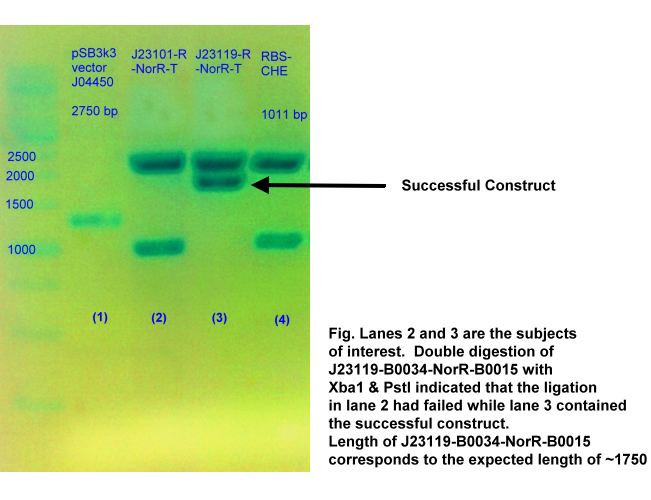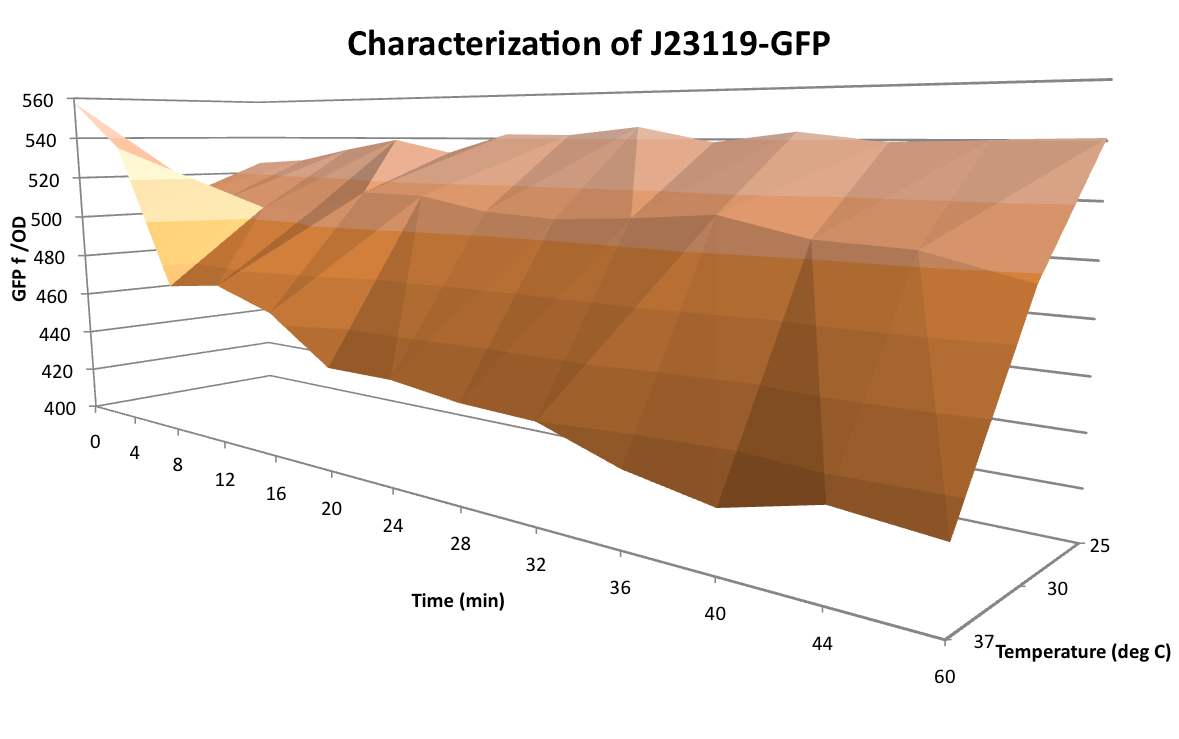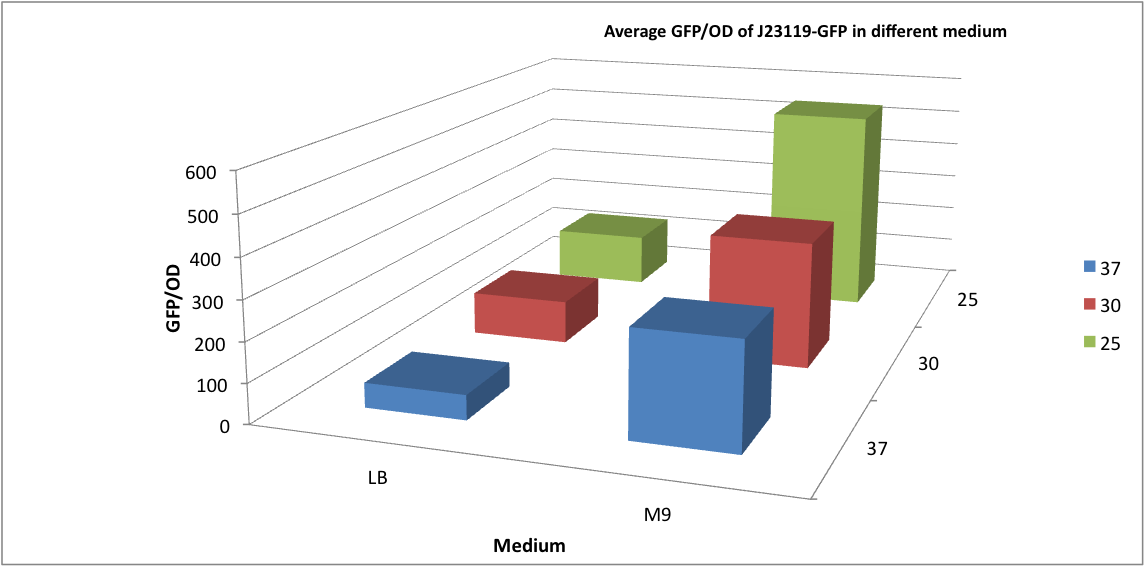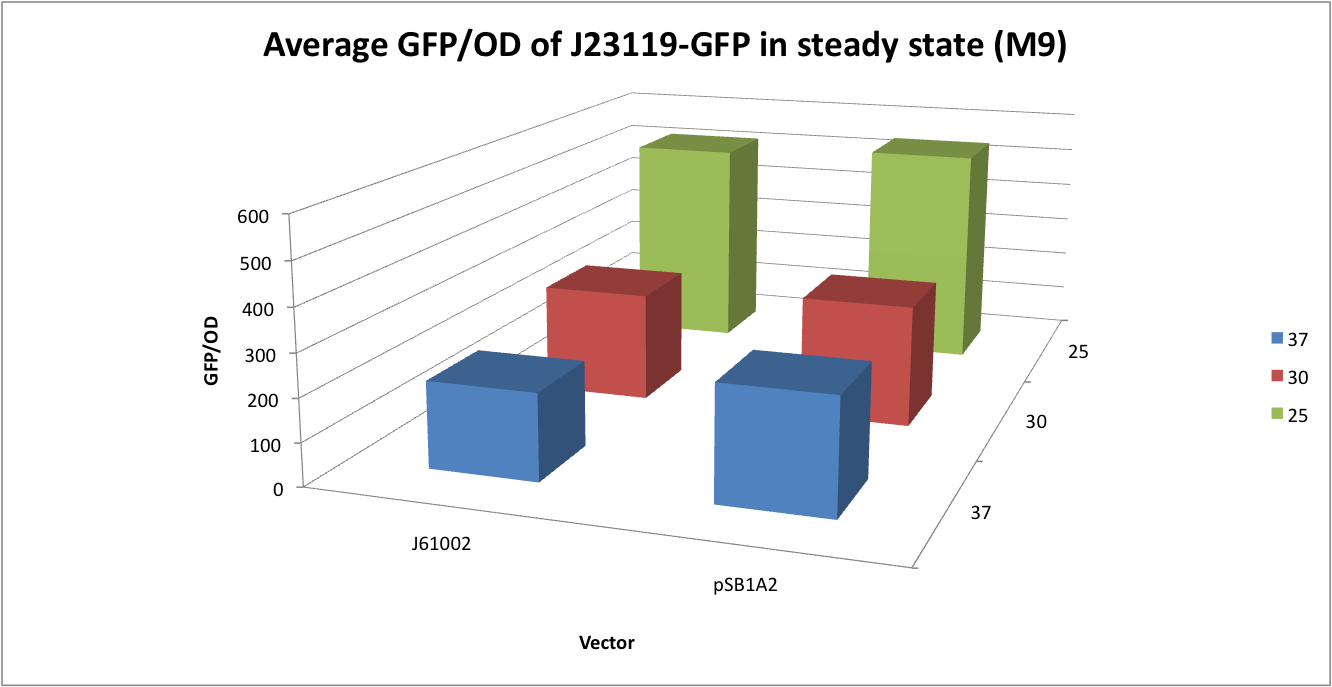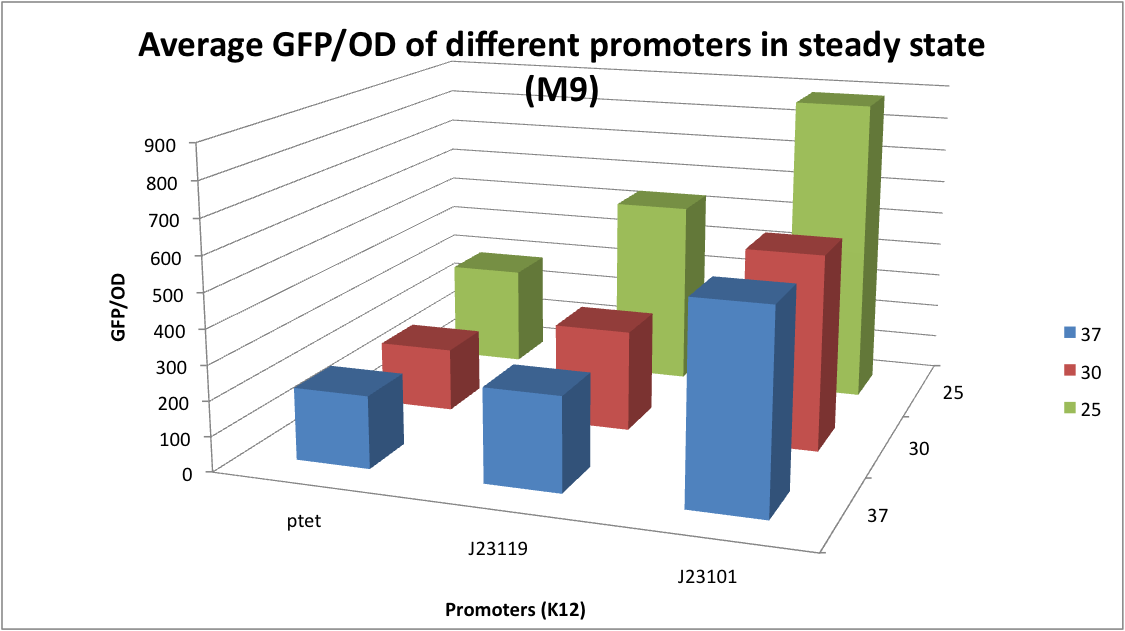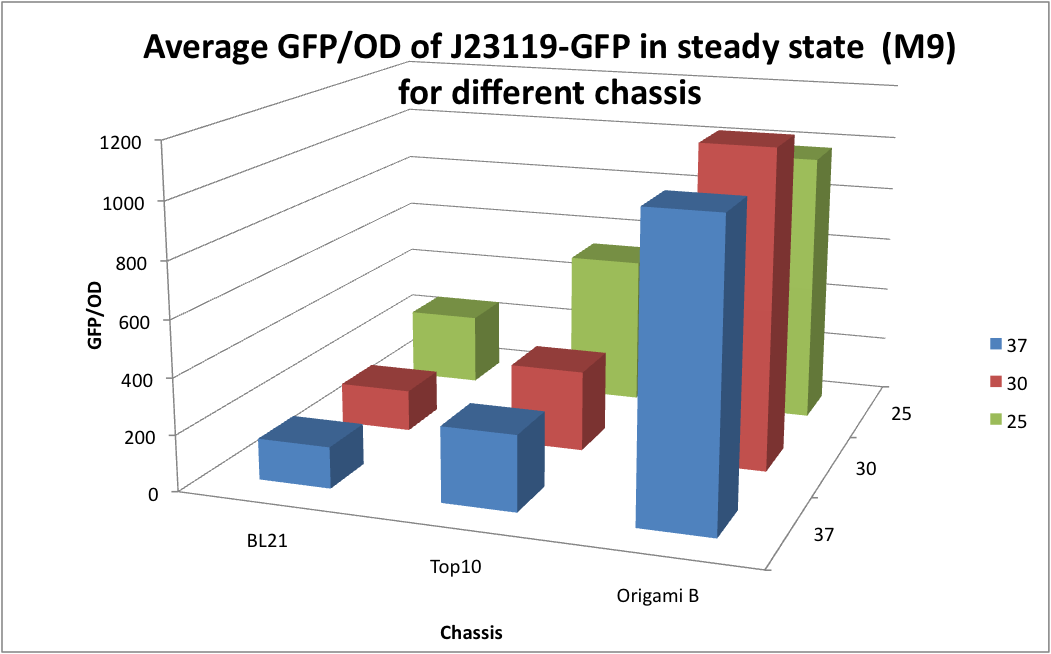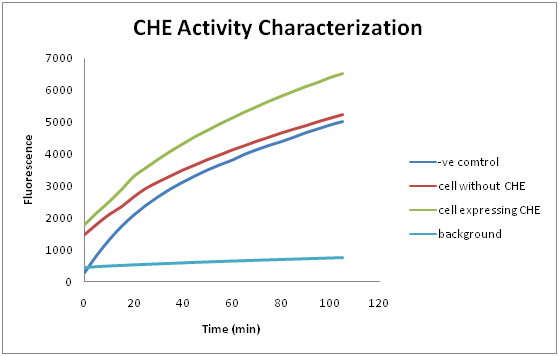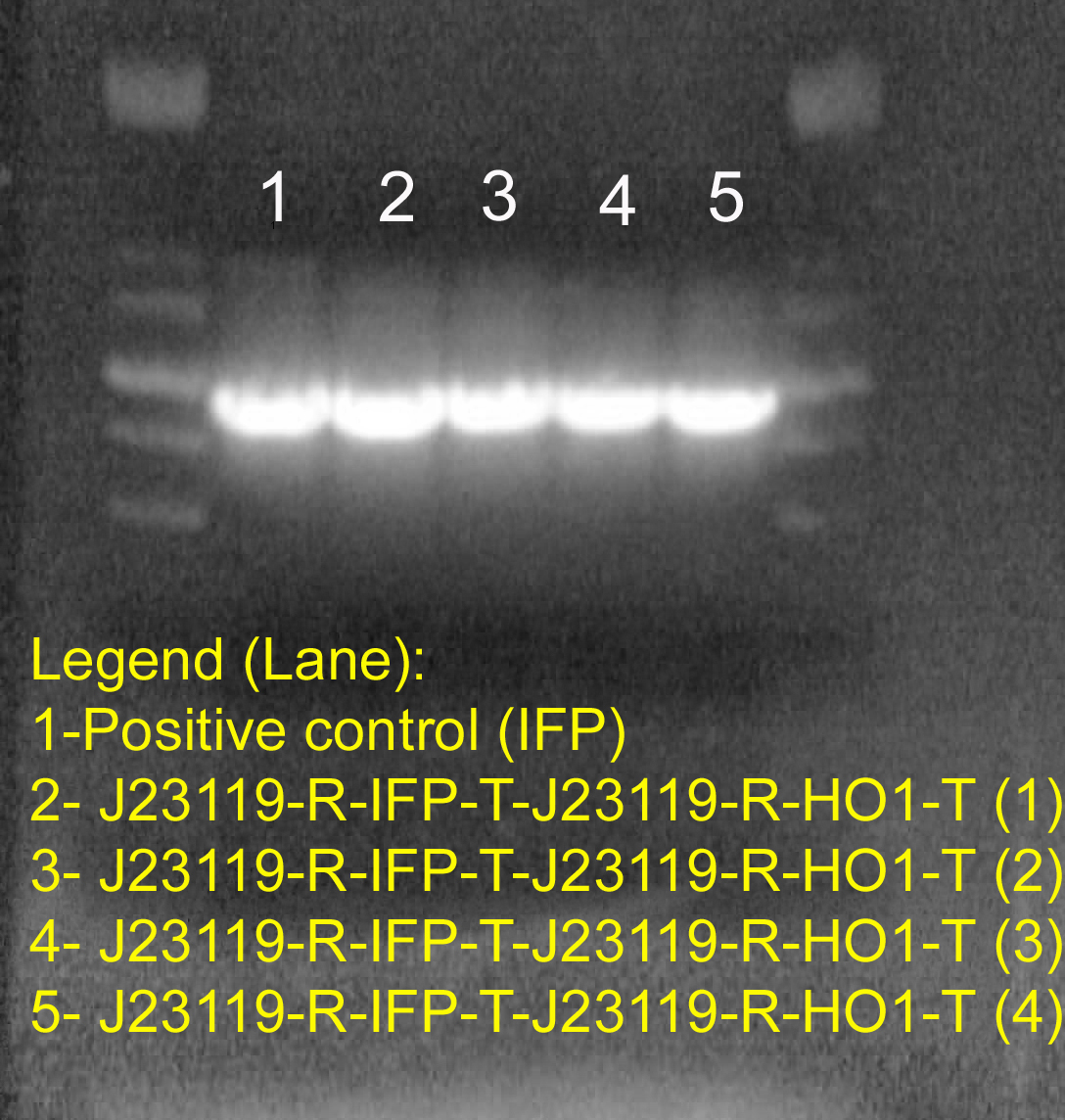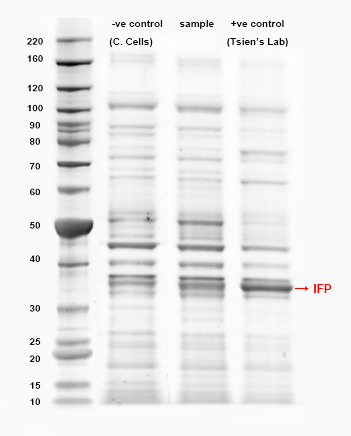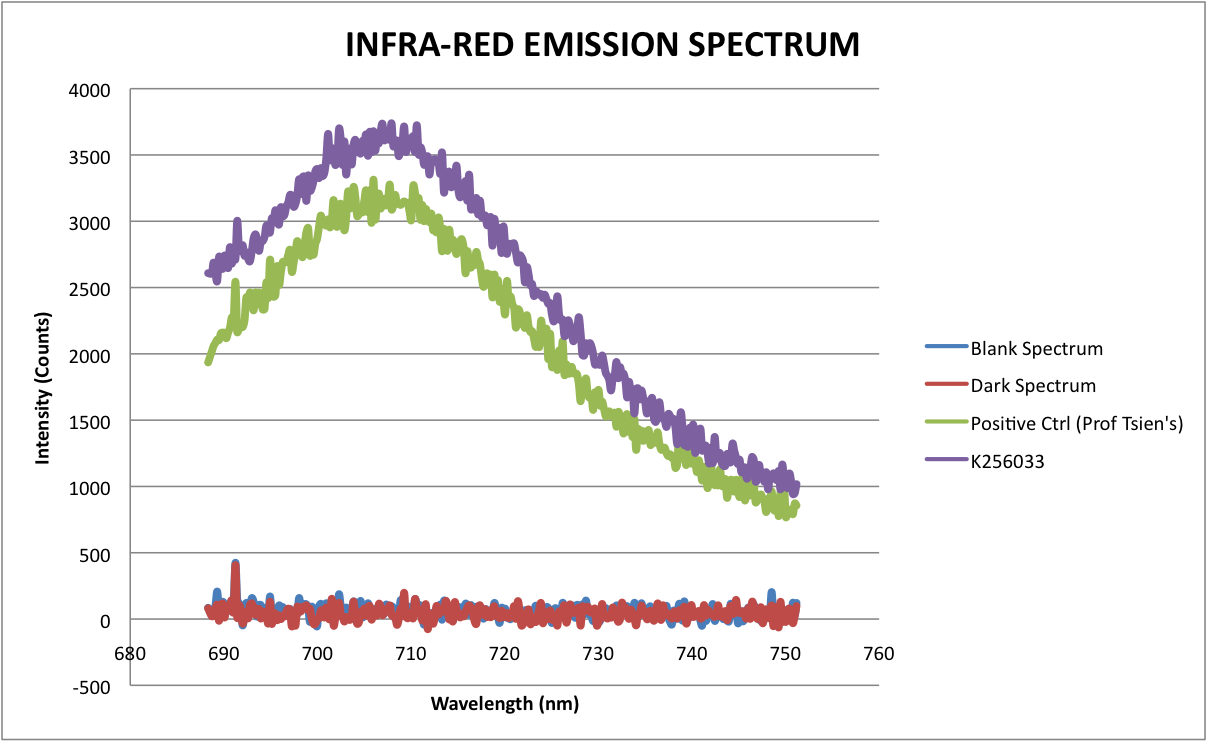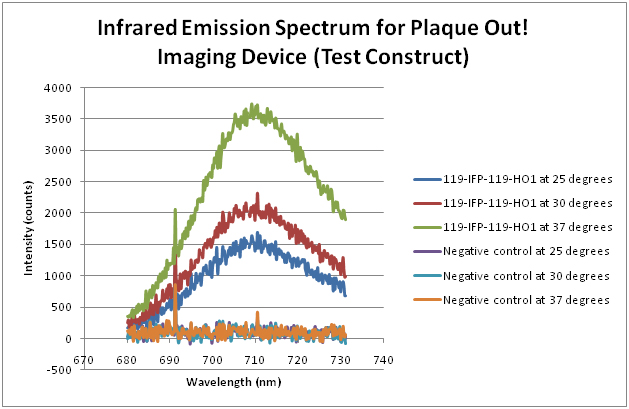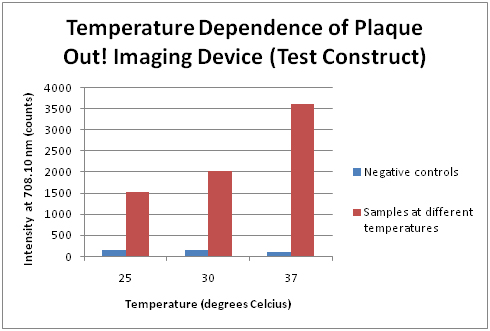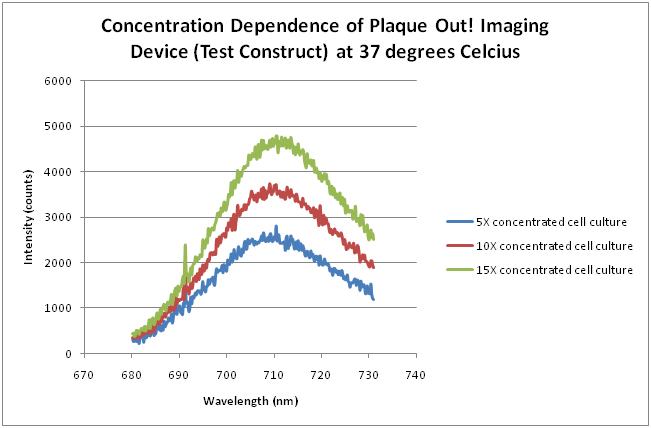Team:NTU-Singapore/Project/Wetlab
From 2009.igem.org
(→Expression of working Cholesteryl Esterase) |
|||
| (18 intermediate revisions not shown) | |||
| Line 28: | Line 28: | ||
| - | == | + | |
| + | <div id="tock"> | ||
| + | <div class="spiffyfg"> | ||
| + | __TOC__ | ||
| + | </div><html> | ||
| + | <b class="spiffy"> | ||
| + | <b class="spiffy5"></b> | ||
| + | <b class="spiffy4"></b> | ||
| + | <b class="spiffy3"></b> | ||
| + | <b class="spiffy2"><b></b></b> | ||
| + | <b class="spiffy1"><b></b></b></b> | ||
| + | </html></div> | ||
| + | |||
| + | |||
| + | '''Our Working Constructs!!''' | ||
| + | |||
* '''J23119-B0034-NorR-B0015''', is a system construct, in that it was intended for our system to feature this as a functional part. | * '''J23119-B0034-NorR-B0015''', is a system construct, in that it was intended for our system to feature this as a functional part. | ||
| Line 35: | Line 50: | ||
* '''J23119-B0034-IFP-B0015-J23119-B0034-HO1(I15008)-B0015''', is a test construct to only test the reporting ability of IFP. | * '''J23119-B0034-IFP-B0015-J23119-B0034-HO1(I15008)-B0015''', is a test construct to only test the reporting ability of IFP. | ||
| + | <br class="clear" /> | ||
| - | |||
| - | |||
| - | == | + | = <span class="title">NorR System Construct</span> = |
| - | + | NorR is an important NO sensor that triggers the transcription at pNO. Thus, we want an NorR producing construct to improve on the sensitivity of pNO to optimise its efficiency at physiological levels. | |
| + | == Verification of construct == | ||
| + | <div class="grid_5 alpha suffix_1"> | ||
| + | '''Double Digestion''' | ||
| - | |||
| - | |||
| - | + | [[Image:NTUnorrgel2.jpg|385px]] | |
| - | + | ||
| + | <center> | ||
| + | '''Successful construct verification''' of J23119-B0034-NorR-B0015 | ||
| - | + | ''This indicates the presence of the construct.'' | |
| + | </center> | ||
| - | <center>'''Successful | + | </div> |
| + | <div class="grid_5 omega"> | ||
| + | '''SDS PAGE''' | ||
| + | |||
| + | [[Image:SDS page for NorR on 16 Sep 09-edited.jpg|285px]] | ||
| + | |||
| + | |||
| + | <center>'''Successful production of NorR'''</center> | ||
</div> | </div> | ||
| + | <br class="clear" /> | ||
| - | |||
| - | |||
| + | ==== Characterization of NorR ==== | ||
| - | |||
| - | + | [[Image:NorR-temp.jpg|400px|center]] | |
| - | < | + | <center>'''SDS PAGE results for NorR expressed at different inoculation temperatures'''</center> |
| Line 82: | Line 105: | ||
| - | == | + | == Characterization of J23119 == |
| - | Since J23119 (<partinfo>K256003</partinfo>) was used as the constitutive promoter for NorR producing construct, it is necessary for us to understand its modular function and how it would affect NorR production. | + | '''Since J23119 (<partinfo>K256003</partinfo>) was used as the constitutive promoter for NorR producing construct, it is necessary for us to understand its modular function and how it would affect NorR production.''' |
| Line 132: | Line 155: | ||
| - | + | Click here to see the detailed Wetlab regarding [[Team:NTU-Singapore/Prototype/Sense#Device_Characterization | Sensing Device Characterization]]. | |
| + | |||
| + | |||
| + | |||
| + | = <span class="title">Cholesteryl Esterase Expression & Characterization</span> = | ||
To examine the enzymatic activity of cholesteryl esterase, a test construct, '''pLac (R0010)-B0034-CHE-B0015''' (<partinfo>K256028</partinfo>) was synthesized. | To examine the enzymatic activity of cholesteryl esterase, a test construct, '''pLac (R0010)-B0034-CHE-B0015''' (<partinfo>K256028</partinfo>) was synthesized. | ||
| Line 138: | Line 165: | ||
CHE production was induced by l0mM lactose. The cells were sonicated, and the cell lysate containing CHE was characterized using Amplex® Red Cholesterol Assay Kit. The characterization results is shown below. | CHE production was induced by l0mM lactose. The cells were sonicated, and the cell lysate containing CHE was characterized using Amplex® Red Cholesterol Assay Kit. The characterization results is shown below. | ||
| + | |||
| + | |||
| + | ==== Characterization of CHE ==== | ||
[[Image:NTUcheresult.png|651px]] | [[Image:NTUcheresult.png|651px]] | ||
| Line 144: | Line 174: | ||
From the graph, the cell lysate containing CHE had achieved higher fluorescence readings than the negative control. The increase in fluorescence reading is due to enzyme-coupled reaction that detects free cholesterol concentration. Hence, we have proven that CHE had indeed been produced from this construct and had been working to our expectation. | From the graph, the cell lysate containing CHE had achieved higher fluorescence readings than the negative control. The increase in fluorescence reading is due to enzyme-coupled reaction that detects free cholesterol concentration. Hence, we have proven that CHE had indeed been produced from this construct and had been working to our expectation. | ||
| - | + | ||
| + | Click here to see the detailed Wetlab regarding [[Team:NTU-Singapore/Prototype/Degrade#Device_Characterization | Degradation Device Characterization]]. | ||
| + | |||
| + | |||
| + | |||
| + | |||
| + | = <span class="title">Infrared Signal from Imaging Device</span> = | ||
The purpose of creating a constitutively expressed Heme oxygenase and Infrared protein (IFP) is to characterize the reporting ability of IFP. The exact construct used was '''J23119-RBS-IFP1.4-Term-J23119-RBS-HO1-Term'''. | The purpose of creating a constitutively expressed Heme oxygenase and Infrared protein (IFP) is to characterize the reporting ability of IFP. The exact construct used was '''J23119-RBS-IFP1.4-Term-J23119-RBS-HO1-Term'''. | ||
| - | [[Image:NTUifpsignal.png|651px]] | + | ==== Verification of construct & Signal ==== |
| + | |||
| + | <div class="grid_5 alpha suffix_1"> | ||
| + | [[Image:NTUifppcr.jpg|285px]] | ||
| + | |||
| + | '''PCR verification of IFP construct''' | ||
| + | </div> | ||
| + | |||
| + | <div class="grid_5 omega"> | ||
| + | [[Image:NTUifpsds.jpg|285px]] | ||
| + | |||
| + | '''SDS PAGE verifying expression of IFP''' | ||
| + | |||
| + | </div><br class="clear"> | ||
| + | |||
| + | |||
| + | <div class="grid_7 alpha">[[Image:NTUifpsignal.png|407px]]</div> | ||
| + | |||
| + | |||
| + | '''Spectrometer reading of IFP''' | ||
| + | |||
| + | <span class="grey">The cell culture were irradiated with a 660nm laser diode for excitation. A spectrometer was used to detect the infrared emission at circa 708nm. Our emission peak (''purple'') closely follows the shape profile of our positive control, IFP1.4 from the Tsien Lab vector. On top of that, our signal is even slightly higher than the Tsien Lab signal (''green''). Future work is recommended on optimising the variables that affect the reproducibility of amplitude.</span> | ||
| + | |||
| + | <br class="clear" /> | ||
| + | |||
| + | |||
| + | ==== Characterisation of IFP ==== | ||
| + | |||
| + | |||
| + | '''Characterization of IFP with varying inoculation temperature''' | ||
| + | |||
| + | [[Image:NTUifpchar1.jpg|651px]] | ||
| + | |||
| + | [[Image:NTUifpchar2.jpg|651px]] | ||
| + | |||
| + | |||
| + | '''Characterization of IFP with varying concentration''' | ||
| + | |||
| + | [[Image:NTUifpchar3.jpg|651px]] | ||
| + | |||
| + | |||
| + | These are the results we have achieved with IFP characterization! | ||
| + | |||
| + | Click here to see the detailed Wetlab regarding [[Team:NTU-Singapore/Prototype/Image#Device_Characterization | Imaging Device Characterization]]. | ||
| - | |||
</div></div> | </div></div> | ||
{{Template:NTUfootalt}} | {{Template:NTUfootalt}} | ||
Latest revision as of 03:44, 22 October 2009
Conclusive Results
Our Working Constructs!!
- J23119-B0034-NorR-B0015, is a system construct, in that it was intended for our system to feature this as a functional part.
- J23119-B0034-GFP-B0015, is a characterization construct to characterize the modular function of the J23119 promoter in the transcription of NorR.
- Lac(R0010)-B0034-CHE-B0015, is also a test construct to only test and characterize the enzymatic activity of CHE.
- J23119-B0034-IFP-B0015-J23119-B0034-HO1(I15008)-B0015, is a test construct to only test the reporting ability of IFP.
NorR System Construct
NorR is an important NO sensor that triggers the transcription at pNO. Thus, we want an NorR producing construct to improve on the sensitivity of pNO to optimise its efficiency at physiological levels.
Verification of construct
Double Digestion
Successful construct verification of J23119-B0034-NorR-B0015
This indicates the presence of the construct.
Characterization of NorR
Since the sole purpose of J23119-B0034-NorR-B0015 () is to produce NorR, we shall dwell into the factors that might affect the production of the protein. The transformed cells were incubated at 3 different environmental temperatures (30 / 37 / 42°C).
SDS PAGE characterization was carried out (top right).
It has been observed that at elevated temperature, i.e. 42°C, production of NorR had decreased as shown by the diminished intensity (see 2nd lane). The production of NorR at 30°C and 37°C carried no significant difference.
Characterization of J23119
Since J23119 () was used as the constitutive promoter for NorR producing construct, it is necessary for us to understand its modular function and how it would affect NorR production.
Preliminary characterisation of J23119 showed that the activity of the promoter to be the strongest at 25°C and weakest at 37°C with 30°C being something of an intermediate. Activity of the J23119 was independent of time. Noteworthy was that there was a drastic drop in activity of the J23119 promoter at 16min, 37°C.
It shows that the supplemented M9 medium is the ideal choice for the characterization of the J23119 promoter. M9 is most likely to be the ideal medium for characterisation of other promoters in general.
Vector backbone did not seem to have much of an effect on the strengths of J23119, although pSB1A2 has a slight positive effect on the activity of the J23119.
Based on our preliminary characterization results, it appeared that J23101 produced a much stronger signal than J23119 and pTet. This was quite surprising because J23119 promoter is supposed to be stronger then the J23101.
J23119 performance appeared to be the best in Origami B.
Click here to see the detailed Wetlab regarding Sensing Device Characterization.
Cholesteryl Esterase Expression & Characterization
To examine the enzymatic activity of cholesteryl esterase, a test construct, pLac (R0010)-B0034-CHE-B0015 () was synthesized.
CHE production was induced by l0mM lactose. The cells were sonicated, and the cell lysate containing CHE was characterized using Amplex® Red Cholesterol Assay Kit. The characterization results is shown below.
Characterization of CHE
From the graph, the cell lysate containing CHE had achieved higher fluorescence readings than the negative control. The increase in fluorescence reading is due to enzyme-coupled reaction that detects free cholesterol concentration. Hence, we have proven that CHE had indeed been produced from this construct and had been working to our expectation.
Click here to see the detailed Wetlab regarding Degradation Device Characterization.
Infrared Signal from Imaging Device
The purpose of creating a constitutively expressed Heme oxygenase and Infrared protein (IFP) is to characterize the reporting ability of IFP. The exact construct used was J23119-RBS-IFP1.4-Term-J23119-RBS-HO1-Term.
Verification of construct & Signal
Spectrometer reading of IFP
The cell culture were irradiated with a 660nm laser diode for excitation. A spectrometer was used to detect the infrared emission at circa 708nm. Our emission peak (purple) closely follows the shape profile of our positive control, IFP1.4 from the Tsien Lab vector. On top of that, our signal is even slightly higher than the Tsien Lab signal (green). Future work is recommended on optimising the variables that affect the reproducibility of amplitude.
Characterisation of IFP
Characterization of IFP with varying inoculation temperature
Characterization of IFP with varying concentration
These are the results we have achieved with IFP characterization!
Click here to see the detailed Wetlab regarding Imaging Device Characterization.
 "
"
